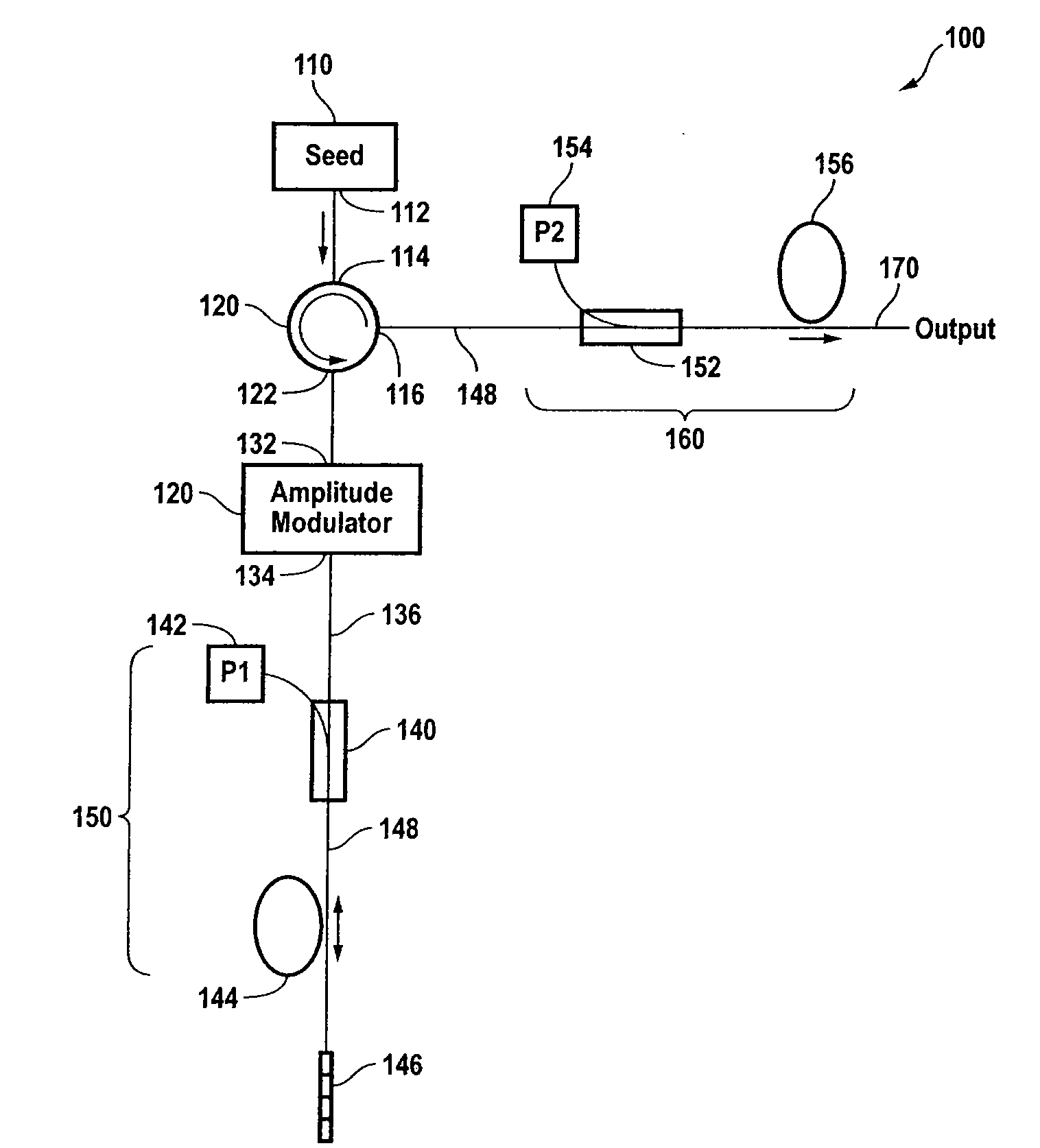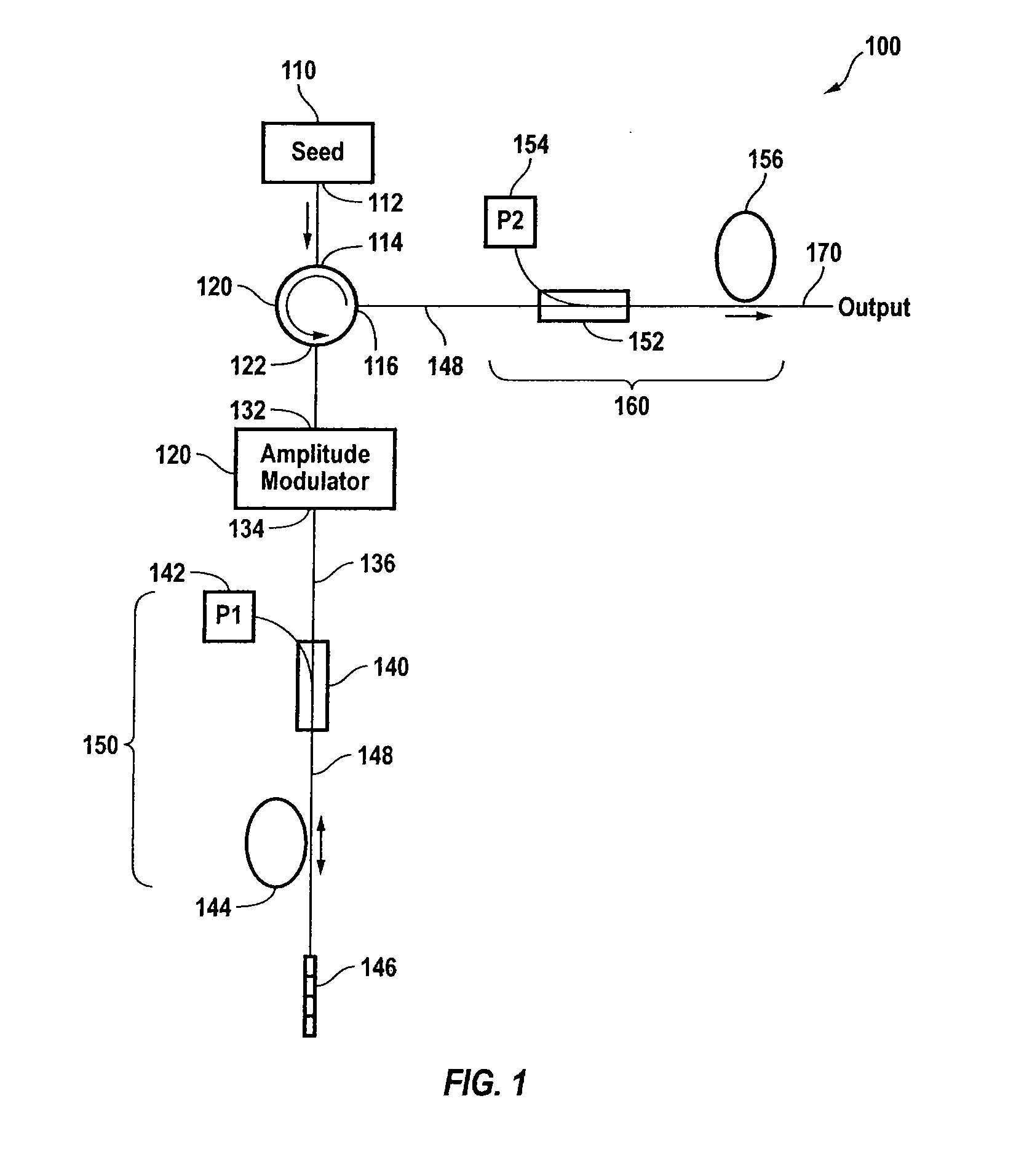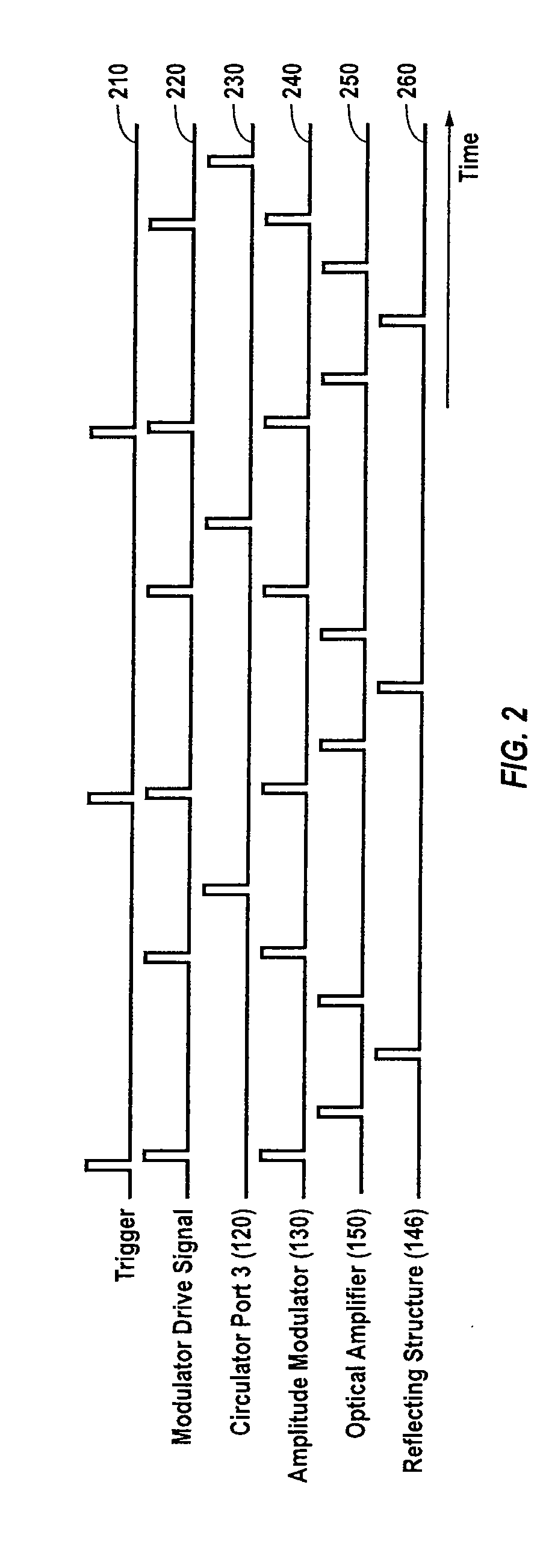Seed source for high power optical fiber amplifier
a high-power, optical fiber technology, applied in semiconductor lasers, instruments, manufacturing tools, etc., can solve the problems of optical nonlinear effects degrading the amplifier performance, and achieve the effects of optimizing the temporal pulse profile, maximizing the energy extraction efficiency of the laser system, and maintaining pulse-to-pulse stability
- Summary
- Abstract
- Description
- Claims
- Application Information
AI Technical Summary
Benefits of technology
Problems solved by technology
Method used
Image
Examples
first embodiment
[0053]Reference is now made to FIG. 4, which illustrates a seed source using a CW laser 21 and an external amplitude modulator 22 receiving CW light from the laser. The CW laser can be a fiber laser, a semiconductor laser, a solid-state laser, or the like. The external modulator can be a Lithium Niobate March-Zehnder modulator with a chirp parameter different than zero. The modulator is used both for generating the optical pulse and for chirping the optical carrier frequency. The modulator's chirp parameter and the drive waveform 23 are chosen appropriately such that the optical pulse 24 with a peak power of 100 mW has a chirp 25, comprising the transient chirp in this case, varying at the pulse peak with a slope of about 0.1 GHz / ns. Also in this example, the chirp is more than 1 GHz over a period of time containing most of the pulse energy. The appropriate optical waveform resulting in the targeted chirp could be calculated with the help of equation (1). Then the drive waveform can...
second embodiment
[0054]Reference is now made to FIG. 5, which illustrates a seed source using a directly-modulated semiconductor laser 31. In contrast with external modulators, a semiconductor laser also possesses an adiabatic chirp component that can be exploited to generate a chirp waveform that varies almost linearly across an optical pulse. The drive current waveform 32 is chosen appropriately to generate an optical pulse 33 and a chirp 34 that varies almost linearly across the pulse. In semiconductor lasers, the output optical pulse and therefore the adiabatic chirp follow closely the drive current waveform. Other variations are also possible, but the illustrated embodiment provides chirp that varies at a fast rate, approximately 9 GHz / ns in this example, around the pulse peak power of 100 mW. Also, the chirp varies by several tens of GHz across the pulse. A further advantage of such a pulse shape is that it can compensate in part for pulse distortion happening in high power fiber amplifiers. S...
third embodiment
[0055]Reference is now made to FIG. 6, which illustrates a seed source using a directly-modulated semiconductor laser 41 and a modulator to generate optical pulses. The drive current waveform 46 is chosen appropriately to generate an optical pulse 48 and a chirp 47 that varies almost linearly across the pulse as described in FIG. 5. Other variations are also possible, but the illustrated embodiment provides chirp that varies at a fast rate, approximately 9 GHz / ns in this example, around the pulse peak power of 100 mW. Also, the chirp varies by several tens of GHz across the pulse. The pulse generated by the directly-modulated semiconductor laser has a width larger than the intended output pulse width.
[0056]An external modulator 42, driven by voltage waveform 43, receives this pulse and slices a narrower pulse out of it as illustrated by pulse 45. In this example, the semiconductor laser pulse width is approximately 40 ns and the modulator slices it to about 10 ns. The external modul...
PUM
| Property | Measurement | Unit |
|---|---|---|
| frequency chirp | aaaaa | aaaaa |
| frequency chirp | aaaaa | aaaaa |
| wavelength range | aaaaa | aaaaa |
Abstract
Description
Claims
Application Information
 Login to View More
Login to View More - R&D
- Intellectual Property
- Life Sciences
- Materials
- Tech Scout
- Unparalleled Data Quality
- Higher Quality Content
- 60% Fewer Hallucinations
Browse by: Latest US Patents, China's latest patents, Technical Efficacy Thesaurus, Application Domain, Technology Topic, Popular Technical Reports.
© 2025 PatSnap. All rights reserved.Legal|Privacy policy|Modern Slavery Act Transparency Statement|Sitemap|About US| Contact US: help@patsnap.com



